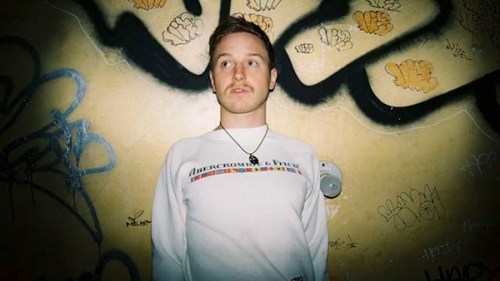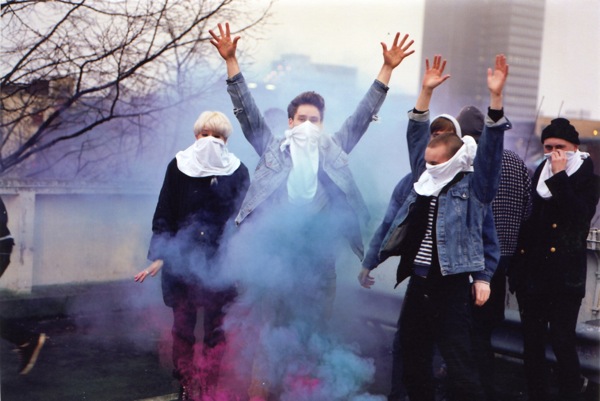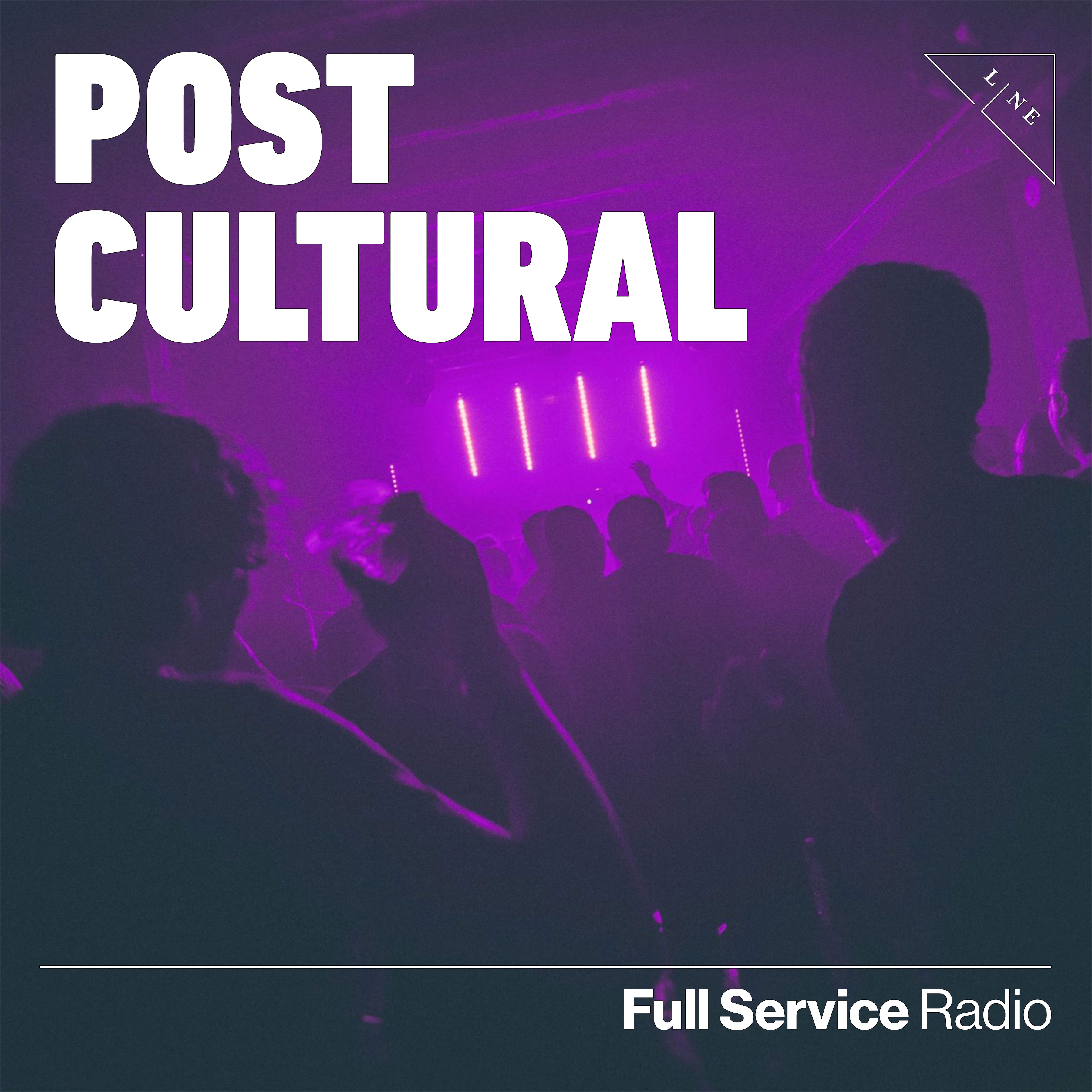
It’s been over thirty years since someone at Sounds magazine invented the term “post punk” to describe Siouxie and the Banshees. Maybe it’s time to come up with something new to describe the strain of introspective music, distorted and dissonant, that flows from Joy Division through My Bloody Valentine to the present. Because let’s face it, “shoegaze” and “noise rock” still sound derisive to me.
With that in mind, there’s something admirable about DC act Phonic Riot describing their music with the portmanteau “psychodramaticgaragerock.” It may be tongue-in-cheek, but it says something about the band’s approach to their craft. From the unrestrained wall of sound on “Run Nikki Run” to the psychedelic sprawl of “Libertina,” Phonic Riot seem content to draw from their collective consciousness, smash it together, and see what works.
I spoke with the woman behind Phonic Riot, vocalist-guitarist Angela Morrish, about the band’s various configurations, tape-only releases, and being one of Fan Death’s favorite DC acts.
Where did you grow up, and how did you end up in DC?
I grew up in Michigan and ended up in DC through a set of ridiculous circumstances completely unrelated to music. I’ve randomly moved around a lot, i.e relationships, boredom, family. I’ve been here on and off for five years now, mainly because there is a really supportive, albeit small, musical community here that I wanted to be a part of. It felt like a really good place to get my feet wet, and it has been.
Have you played in other bands or with other styles of music?
I messed around a little with a post-rock band and dabbled in bass when I was learning guitar a few years back. I’ve sang in various projects (even some pretty embarrassing metal stuff in high school), but I’ve only seriously pursued writing my own material and putting it out there over the course of the past couple years. It’s all pretty new to me and has come together super fast. I’ve always been a writer, and written songs in my head occasionally recording them, but live performance and the professional end to being a musician is very new thing for me.
I’ve seen various configurations of the band, including you playing just with Nathan Jurgenson, or with a full band. What’s the current line-up, and how did everyone get together?
A lot of the line-up switches were circumstantial. Everything here is pretty tight knit, and people are constantly jamming with other people. Sometimes that sticks, sometimes it doesn’t. My entire approach to music right now is to do what I do, and fill in parts where they’re needed.
I’ve currently been working with Sam Chintha (Antiques/Alcian Blue), John Wood (A Cricket In Times Square) and Alex Rizzo (Dark Sea Dream) for a set of live shows. They’re all super talented and it’s been a privilege to work with them. As for the future, I guess we’ll see what’s in store. The project is definitely still in it’s infant stage.
The bands you name as influences (My Bloody Valentine, A Place To Bury Strangers, Echo And The Bunnymen, etc.) cover the usual post-punk territory, but one thing that sets you apart is your voice. As you developed your talent, who are other singers you’ve looked to for inspiration?
I grew up with a lot of Joni Mitchell and Bob Dylan, which is where I get my roots in being a lyricist. But that aside, I listen to everything. People who’ve inspired me throughout the years range from Jonsi (Sigor Ros) to Nick Cave; I guess that comes off in my music and my voice. Artistically, I like to experiment with everything.
Recently, there’s been a glut of female-fronted indie bands that make darker music. Who do you feel your contemporaries are, locally and globally?
Zola Jesus is the first name that comes to mind, if we’re speaking in terms of females. Admittedly, I can’t say there are many other “dark” female artists in the mainstream I’ve come across and particularly taken to.
As for peers, one band that everyone needs to look out for is We Are Hex (Indianapolis). Their front woman Jilly Weiss has a killer set of pipes. You don’t get any better than that live. Period. Talk Normal (Brooklyn) is also an insanely good female duo. I’m sure I’m missing others…
With your release on 2,632 Tapes, you’re officially one of the few DC bands Fan Death’s Sean Gray likes. What was the thought process behind a tape-only release?
There’s just something really aesthetically-pleasing to me about tapes and records. Not to mention, CDs just seemed like a waste of money. Everyone just ends up putting them on their iPods anyway. We included mp3 downloads for people without tape decks, but there’s just this rich low-fi sound you get from tapes. When a Phonic Riot album finally drops there is no question the main focus will be on records for that very reason. The quality is just so much better. But, I am also a person who prefers bookstores to Kindle. Hands down.
Speaking of Sean Gray, Fan Death and musical shoutouts: Clockcleaner and Puerto Rico Flowers. Anyone who hasn’t checked them out DO IT. Talk about music that has inspired me recently. Props to him (and that label) for putting that music out there.
What’s next for the band, as far as new music and releases?
New music is always in the works, but I have plans to record all of the songs currently worked into the live sets this fall. I’m still looking into where all of that is going to happen, but it absolutely is.
What can audiences expect from a Phonic Riot live show?
It’s pretty incredible to me to see how much my music has evolved in little over year, through the contribution of other people and performing. On that note the performance is constantly growing and changing, and hopefully keeping the audience intrigued. The songs at the core however remain the same, and people can count on seeing them – and the overly emotional girl who wrote them – every time.
Phonic Riot plays the Velvet Lounge on Monday, August 22, and in Silver Spring on Thursday, August 25 as part of the Sonic Circuits festival. In the meantime, preview the tracks off their 2,632 Tapes release, or better yet, dust off your tape deck and buy a copy.











